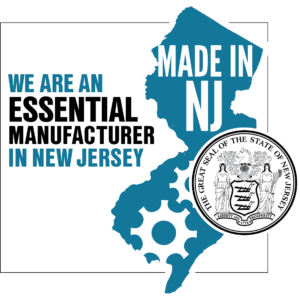The Allure of Laser Cutting [VIDEO]
How does laser cutting compare with other precision metal cutting methods? Watch this video to learn some of the pros and cons of this metal cutting method.
How does laser cutting compare with other precision metal cutting methods? Watch this video to learn some of the pros and cons of this metal cutting method.
For some medical device applications requiring biomaterials, tungsten and gold-plated tungsten wire may be suitable alternatives to precious metals such as gold.
As important as inspections are, 100% inspection requires time and cost without a guarantee of 100% compliance. See what a sampling plan is and how it solves this challenge.
With profile of a line vs. profile of a surface, the former controls variation at specified cross sections while the latter controls the entire feature surface.
To avoid the challenges of verifying OD/ID concentricity, try to use other applicable GD&T symbols in place of concentricity in tubing drawings and designs.
The Swiss machine has evolved and improved since the original Swiss lathe was invented, making the modern method an important part of precision CNC machining.
Surface finish requirements are just some of the details critical to completing an RFQ that will help you optimize for manufacturability.
It may be tempting to assume that a very tight tolerance should be your default choice. But, when they aren’t essential, it could increase your costs needlessly.
Surface finish requirements are among the details that are critical to creating a complete RFQ that will help to optimize for manufacturability.
While CNC machining can produce an array of complex, precision metal components, there are some challenges to the process you need to be aware of.
Surface flatness is an indicator of all points along a surface lying in the same plane, with the highest and lowest points within the flatness tolerance range.
Unfortunately, consistent results aren’t always guaranteed. Learn what you can do to ensure calibrated measuring yields accurate results.
Eddy current testing is an important method of nondestructive testing. See what you may not have known about the process.
How do you qualify a new sourcing partner and ensure an efficient and problem free experience? Considering these points will help you make a decision you can feel confident about.
With these RFQ tips, you can not only speed up the quote process, but also ensure you get the part you want and a cost estimate that is as accurate as possible.
High precision internal grinding methods such as ID grinding and honing are used to achieve smooth finishes and tight tolerances on bore, hole, and tube IDs.
Double disk grinding provides dimensional accuracy for metal part applications that require tight tolerances, parallelism, flatness, and thickness control.
Precision flat lapping and other lapping techniques can be used for small parts requiring tight control of surface finish, flatness, thickness, and parallelism.
The electrochemical grinding process is a highly specialized method that combines surface grinding, chemistry, and fixturing, and has limited applications.
OD grinding is used to shape the external surface of objects between the centers and excels at removing circular defects and restoring or creating roundness.
Over time, we’ve developed a special appreciation for tungsten and what it can do. Learn some interesting facts you may not have known.

89 Commerce Rd Cedar Grove, NJ 07009
973 239 1100 sales@metalcutting.com
sales@metalcutting.com
Copyright © 2025 Metal Cutting Corporation
Core Capabilities
Precision Cutting
Grinding & Lapping
Polishing
Machining
Finishing

